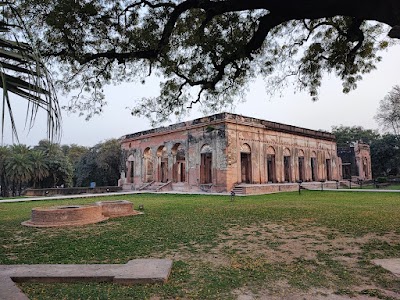
British Residency
Lucknow, India
- Explore the ruins of the Residency
- Learn about the siege of 1857
- See the cannons and fortifications
- Visit the cemetery and memorial
Known for:
Description:
The British Residency in Lucknow is a historical landmark and a reminder of the British Raj in India. It served as a refuge for British residents during the 1857 Sepoy Mutiny, also known as the First War of Indian Independence. The complex, spread over 30 acres, includes several buildings like the Residency building itself, the Treasury, and the hospital, all bearing scars from the siege. Visitors can explore the ruins, walk through the cemetery where those who perished during the siege are buried, and see the remaining cannons and fortifications. The site is well-maintained and offers a glimpse into a pivotal moment in Indian history. Informative plaques and exhibits provide context and details about the events that unfolded here.
History:
The British Residency in Lucknow was established in 1775 as the residence of the British Resident, the representative of the East India Company to the court of the Nawab of Awadh. It became a significant center of British power and influence in the region. During the 1857 uprising, the Residency was besieged for 87 days by Indian sepoys. The siege was a brutal and bloody affair, resulting in heavy casualties on both sides. The eventual relief of the Residency by British forces marked a turning point in the conflict. Following the mutiny, Lucknow came under direct British rule, and the Residency, though partially destroyed, remained a symbol of British power until Indian independence in 1947. Today, it stands as a poignant reminder of a turbulent period in Indian history.